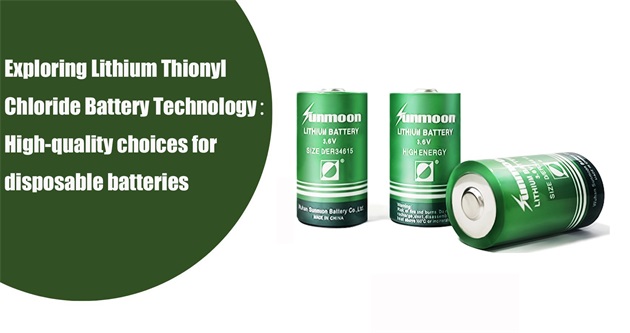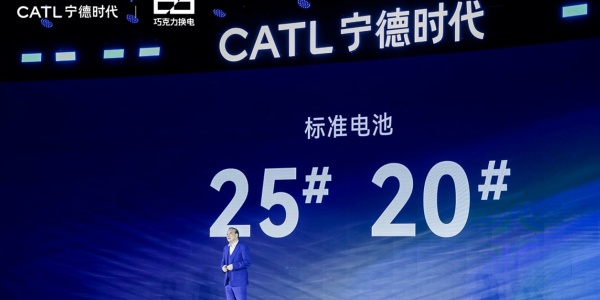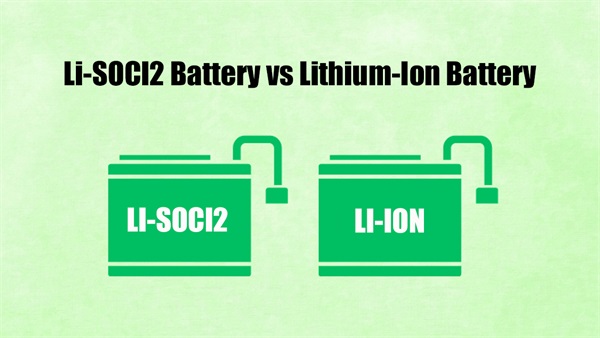Exploring Lithium Thionyl Chloride Battery Technology:High-quality Choices for Disposable Batteries

Lithium thionyl chloride (Li-SOCl₂) batteries are widely used in applications that demand high energy density, long operational life, and the ability to withstand extreme environmental conditions. Their distinctive chemistry makes them a preferred choice in critical fields such as medical devices, military applications, and remote wireless systems. This guide provides an in-depth exploration of Li-SOCl₂ batteries, covering their features, working principles, advantages, disadvantages, and practical applications.
What Are Lithium Thionyl Chloride Battery?
Lithium thionyl chloride batteries are primary (non-rechargeable) batteries that use lithium as the anode and thionyl chloride (SOCl₂) as the electrolyte and cathode. This unique chemistry allows for high energy density and low self-discharge rates, making these batteries ideal for long-term, low-power applications. Companies such as Tadiran Batteries are well-known for producing high-performance Li-SOCl₂ batteries, while Ufine Battery offers alternative lithium-ion solutions for applications requiring rechargeability and environmental sustainability.
Key Features of Li-SOCl₂ Battery:
High Energy Density: Li-SOCl₂ batteries have an energy density of approximately 1280 Wh/L, which is much higher than many other battery types.
Long Shelf Life: These batteries can retain their charge for up to 20 years or more, thanks to their low self-discharge rate.
Wide Temperature Range: They can operate efficiently across a broad temperature spectrum, from -55°C to +125°C.
Voltage Stability: They maintain a steady voltage output throughout the discharge cycle, ensuring reliable performance over extended periods.
How Do Lithium Thionyl Chloride Battery Work?
The operation of Li-SOCl₂ batteries is based on electrochemical reactions between the lithium anode and the thionyl chloride electrolyte.
Discharge Process:
Initial State: The battery consists of a lithium anode and thionyl chloride electrolyte (which also serves as the cathode).
Discharge: When the battery is connected to a load, lithium atoms at the anode oxidize, releasing electrons. These electrons flow through the external circuit, providing electrical power to the device.
Electrolyte Reaction: The thionyl chloride electrolyte undergoes a reduction reaction at the cathode, producing sulfur dioxide (SO₂) and lithium chloride (LiCl).
Passivation Layer: A passivation layer of lithium chloride forms on the anode, helping to control the rate of reaction and minimize self-discharge.
Voltage Stability: The battery's voltage remains stable due to the controlled reaction rates and properties of the passivation layer.
This chemical process ensures that Li-SOCl₂ batteries deliver a consistent and reliable power supply for many years.
Advantages and Disadvantages of Lithium Thionyl Chloride Battery
Advantages:
High Voltage: Li-SOCl₂ batteries offer a nominal voltage of 3.6V, which is higher than most other non-rechargeable batteries.
Longevity: They can last up to 40 years in some applications due to their low self-discharge rate.
Durability: These batteries can withstand harsh environmental conditions, including extreme temperatures and high vibration.
Safety: Non-flammable electrolyte and rugged construction contribute to enhanced safety compared to other battery types.
Disadvantages:
Non-Rechargeable: Li-SOCl₂ batteries are primary cells, meaning they cannot be recharged once depleted.
Higher Cost: The initial cost of Li-SOCl₂ batteries is higher than other battery types, which may be a consideration for large-scale or consumer applications.
Toxicity: Thionyl chloride is toxic and corrosive, requiring careful handling and disposal.
Limited Availability: While highly specialized, these batteries are not as widely available as more common battery types, limiting their use in consumer products.
Comparison with Other Battery Types
To understand how Li-SOCl₂ batteries stand out, let's compare them with some of the most popular alternatives: alkaline, lithium-ion, lead-acid, and nickel-cadmium (NiCd) batteries.
Li-SOCl₂ vs. Alkaline Batteries
Energy Density: Li-SOCl₂ (1280 Wh/L) vs. Alkaline (320 Wh/L)
Shelf Life: Li-SOCl₂ (20+ years) vs. Alkaline (5-10 years)
Temperature Range: Li-SOCl₂ (-55°C to +125°C) vs. Alkaline (-20°C to +54°C)
Voltage Stability: Li-SOCl₂ maintains a stable voltage, while alkaline batteries' voltage decreases gradually over time.
Li-SOCl₂ vs. Lithium-Ion Batteries
Rechargeability: Li-SOCl₂ is non-rechargeable, while lithium-ion is rechargeable (500-1000 cycles).
Energy Density: Li-SOCl₂ has a higher energy density (1280 Wh/L), while lithium-ion ranges from 250-693 Wh/L.
Self-Discharge Rate: Li-SOCl₂ (<1% per year) vs. Lithium-ion (2-3% per month).
Applications: Li-SOCl₂ is ideal for long-term, low-power applications, while lithium-ion is better for high-power, frequent-use applications.
Li-SOCl₂ vs. Lead-Acid Batteries
Weight: Li-SOCl₂ is much lighter than lead-acid batteries.
Energy Density: Li-SOCl₂ (1280 Wh/L) vs. Lead-acid (80-90 Wh/L)
Temperature Performance: Li-SOCl₂ excels in extreme temperatures, while lead-acid performs poorly in cold temperatures.
Maintenance: Li-SOCl₂ requires no maintenance, whereas lead-acid batteries need regular checks and maintenance.
Li-SOCl₂ vs. NiCd Batteries
Memory Effect: Li-SOCl₂ has no memory effect, while NiCd suffers from it.
Environmental Impact: Li-SOCl₂ is less toxic, but it still requires specific disposal. NiCd batteries contain toxic cadmium and are heavily regulated.
Voltage: Li-SOCl₂ has a higher nominal voltage (3.6V), compared to NiCd (1.2V).
Self-Discharge Rate: Li-SOCl₂ has an extremely low self-discharge rate, while NiCd discharges faster (15-20% per month).
Part 5. Safety Considerations for Lithium Thionyl Chloride Battery
Due to their toxic and corrosive chemistry, proper handling, storage, and disposal of Li-SOCl₂ batteries are essential.
Handling and Storage:
Protective Gear: Always use gloves and goggles when handling these batteries to avoid direct contact with the electrolyte.
Storage: Store the batteries in a cool, dry, and well-ventilated area away from heat and sunlight to prevent degradation.
Usage:
Short-Circuit Prevention: Ensure that the battery terminals do not come into contact with conductive materials to prevent short-circuiting.
Temperature Monitoring: Avoid exposing the batteries to temperatures outside their specified range (-55°C to +125°C) to prevent leakage or rupture.
Disposal:
Follow Regulations: Dispose of used Li-SOCl₂ batteries according to local laws and regulations to minimize environmental impact.
Recycling: Participate in battery recycling programs to ensure environmentally safe disposal.
How to Choose the Right Lithium Thionyl Chloride Battery for Your Application
When selecting a Li-SOCl₂ battery, consider the following factors:
Application Needs: Ensure that the battery meets the voltage, capacity, and lifespan requirements of your specific device.
Operating Temperature: Make sure the battery can handle the temperature extremes in which it will be used.
Longevity: Choose a battery with a suitable shelf life for your application, especially for devices that require long-term, reliable power.
Supplier Reputation: Opt for well-established manufacturers like EnergyX for reliability and quality assurance. You can contact us if you need, We offer high quality Li-SOCl2 batteries to ensure the stable operation of your equipment.
Frequently Asked Questions (FAQs)
What is the difference between lithium-ion and lithium-thionyl chloride battery?
Lithium-ion batteries are rechargeable and commonly used in consumer electronics, while lithium-thionyl chloride batteries are non-rechargeable. Li-SOCl₂ batteries offer higher energy density and longer shelf life, making them ideal for industrial and medical applications.
Can lithium thionyl chloride battery be recharged?
No, Li-SOCl₂ batteries are primary cells and cannot be recharged. Attempting to recharge them could lead to safety hazards, including potential fire risks.
What is the operating temperature range of a lithium thionyl chloride battery?
These batteries can operate between -55°C and +125°C, making them suitable for a wide variety of environments.
How long do lithium thionyl chloride batteries last?
With a very low self-discharge rate, Li-SOCl₂ batteries can last up to 20 years, and in some cases, even up to 40 years.
Are lithium thionyl chloride batteries safe?
When handled and disposed of correctly, Li-SOCl₂ batteries are safe. However, they contain toxic and corrosive materials, so it is important to follow safety protocols during handling, use, and disposal.

